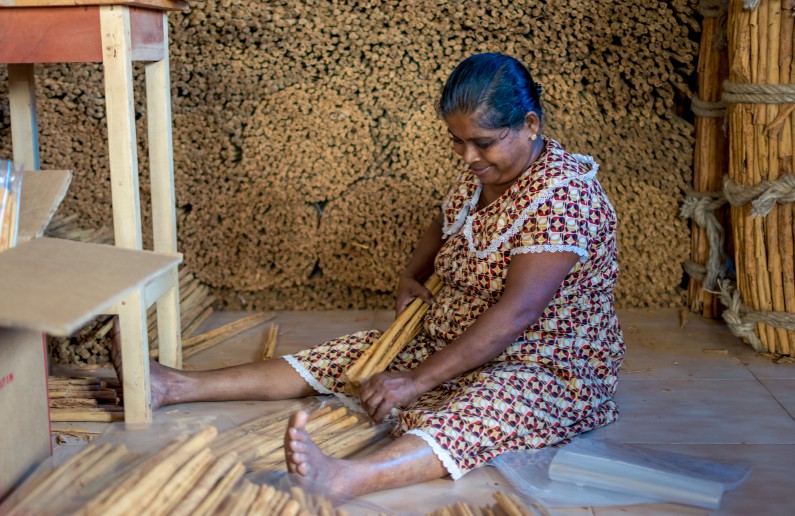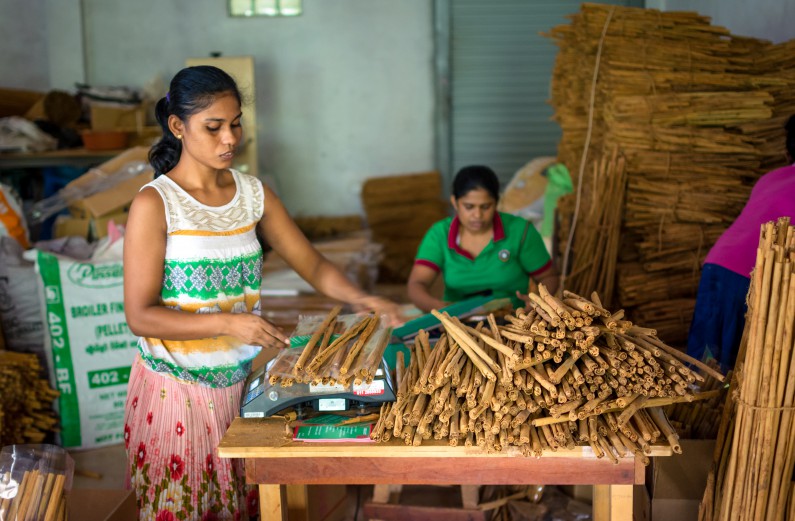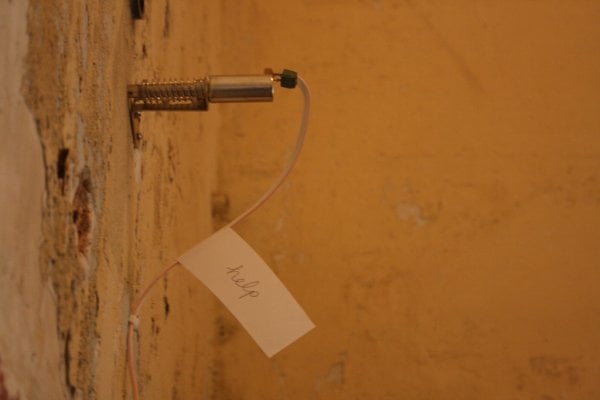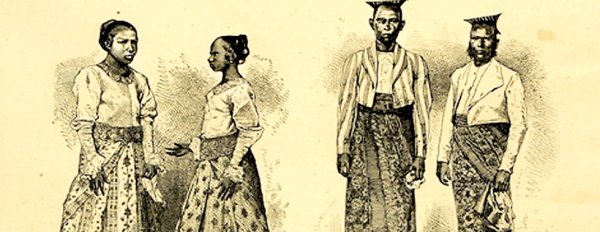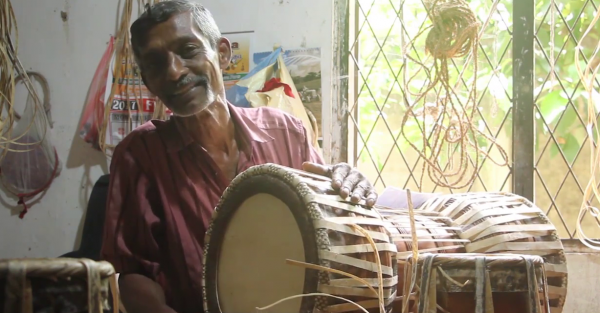
Sri Lanka is ranked the fourth biggest exporter of cinnamon in the world, with 8% of the global exports according to a 2014 FAO database. Cinnamomum veru, also known as the Ceylon cinnamon tree, is native to Sri Lanka and considered to be more aromatic than other species. Almost 90% of the world supply of this cinnamon is exported from Sri Lanka.
Cinnamon growing in Sri Lanka goes back to ancient times, with Roman era records showing their medicinal use in Europe. Arabs introduced Ceylon cinnamon to Europe through trade. In fact, lust for this spice was one of the reasons many European nations wanted to colonise Sri Lanka. Today cinnamon is mainly grown in the South of Sri Lanka, and most exports are sent to Central and Southern America.
The following photo story includes images taken around the Madhu river where cinnamon farms are flourishing. The process of making cinnamon is extremely time-consuming and labor intensive. Cinnamon seeds typically take three years to grow into a tree and can then be harvested for three barks a year for up to six years.
The harvesting process begins with scraping off the outer layer of the cinnamon bark with special tools, so as to not damage the inner layer. The scraped skin is then recycled into compost and used to grow more cinnamon plants.
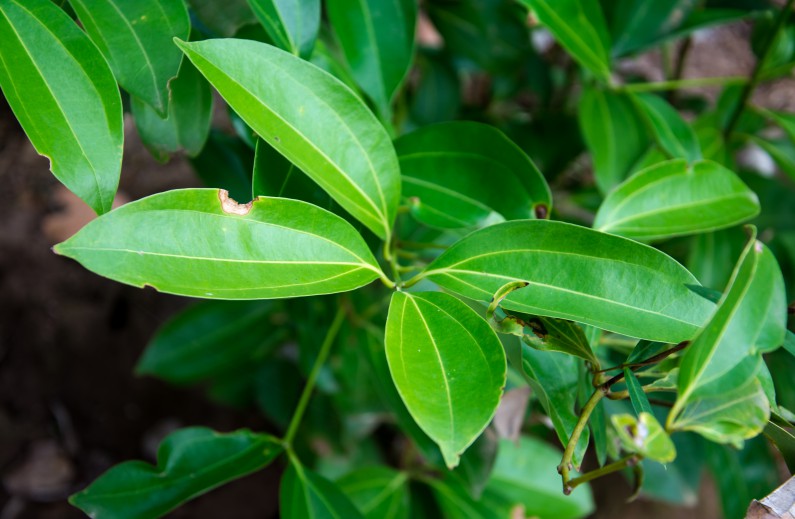
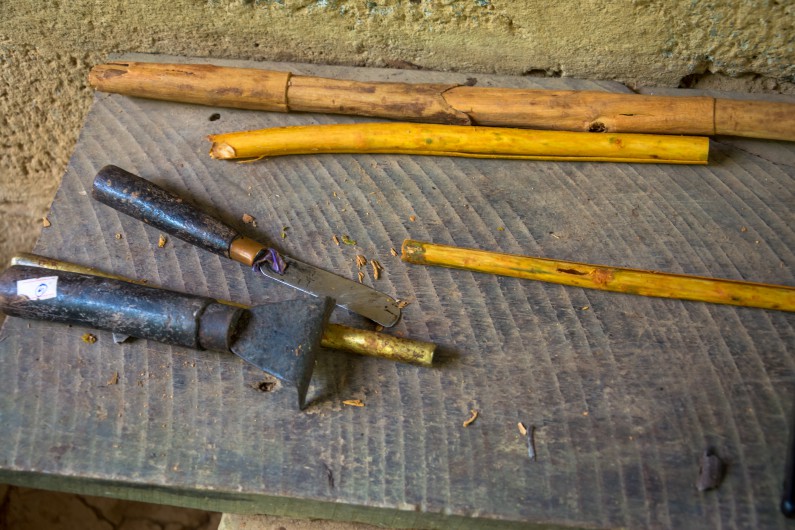
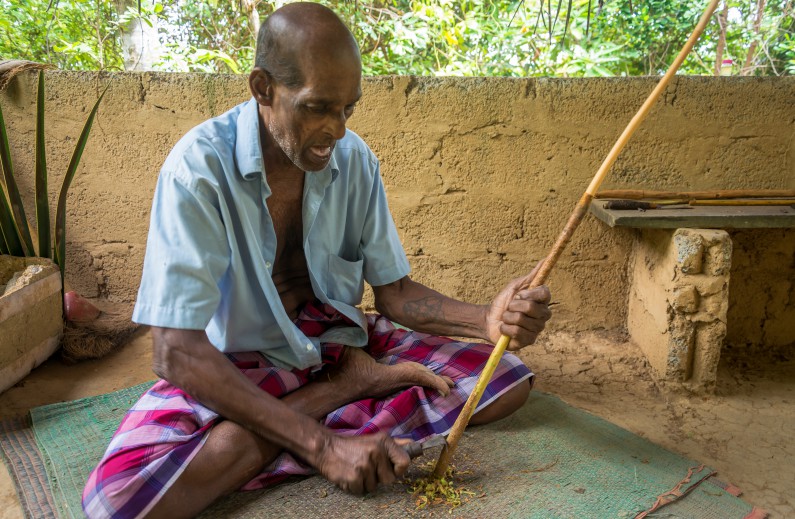
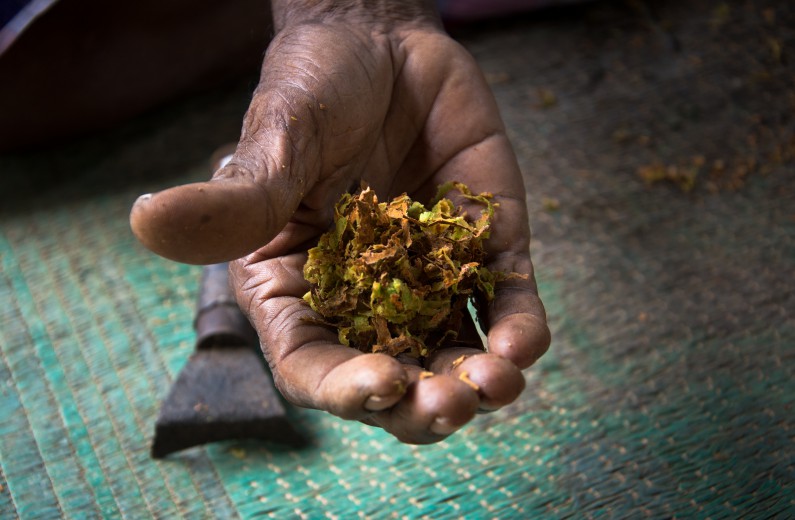
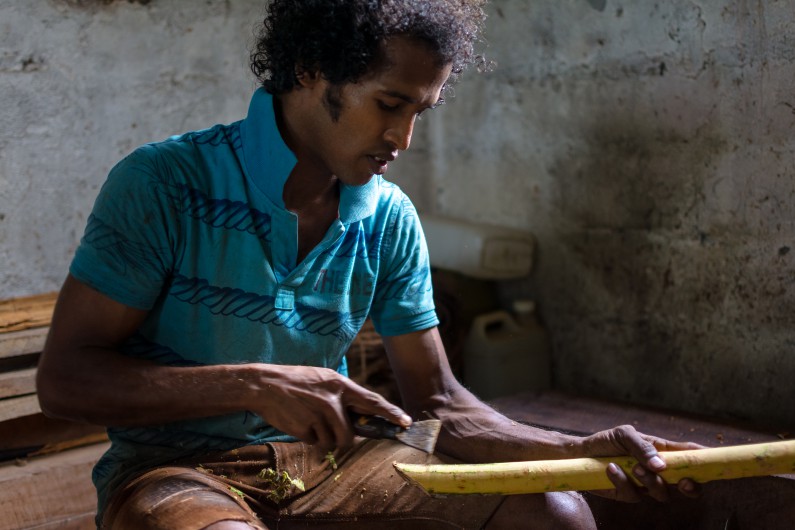 The inner layer of the bark is then gently carved, in order to separate the cinnamon from the inner wood.
The inner layer of the bark is then gently carved, in order to separate the cinnamon from the inner wood.
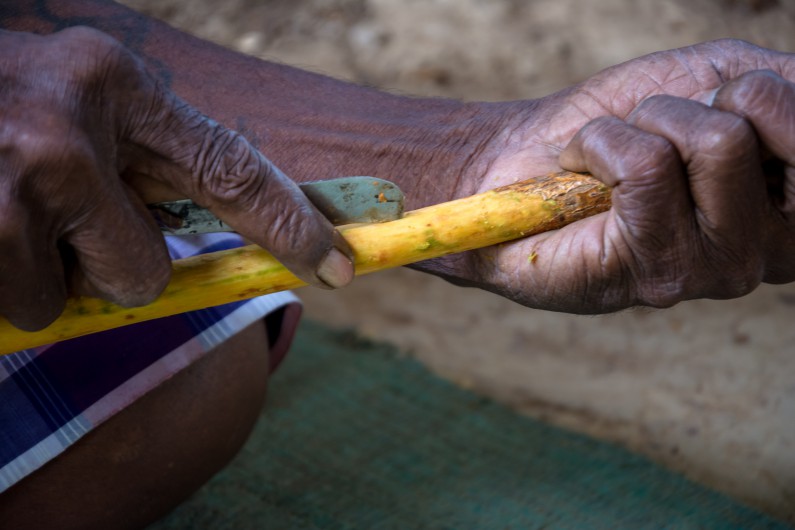

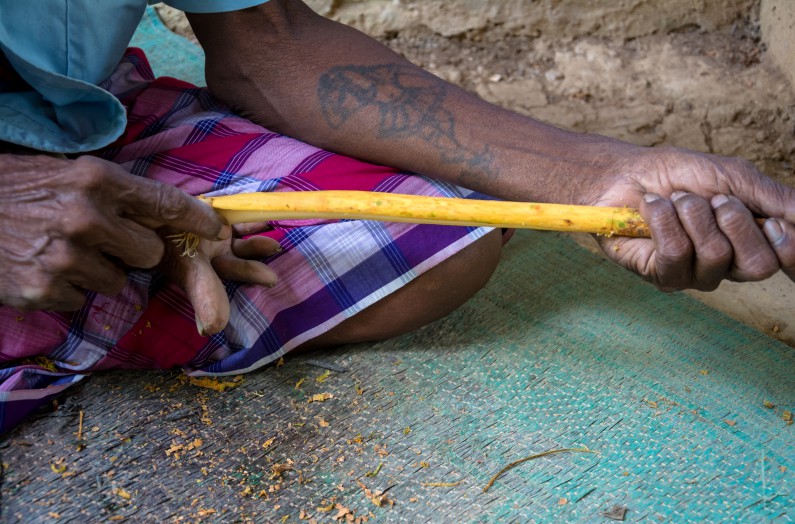
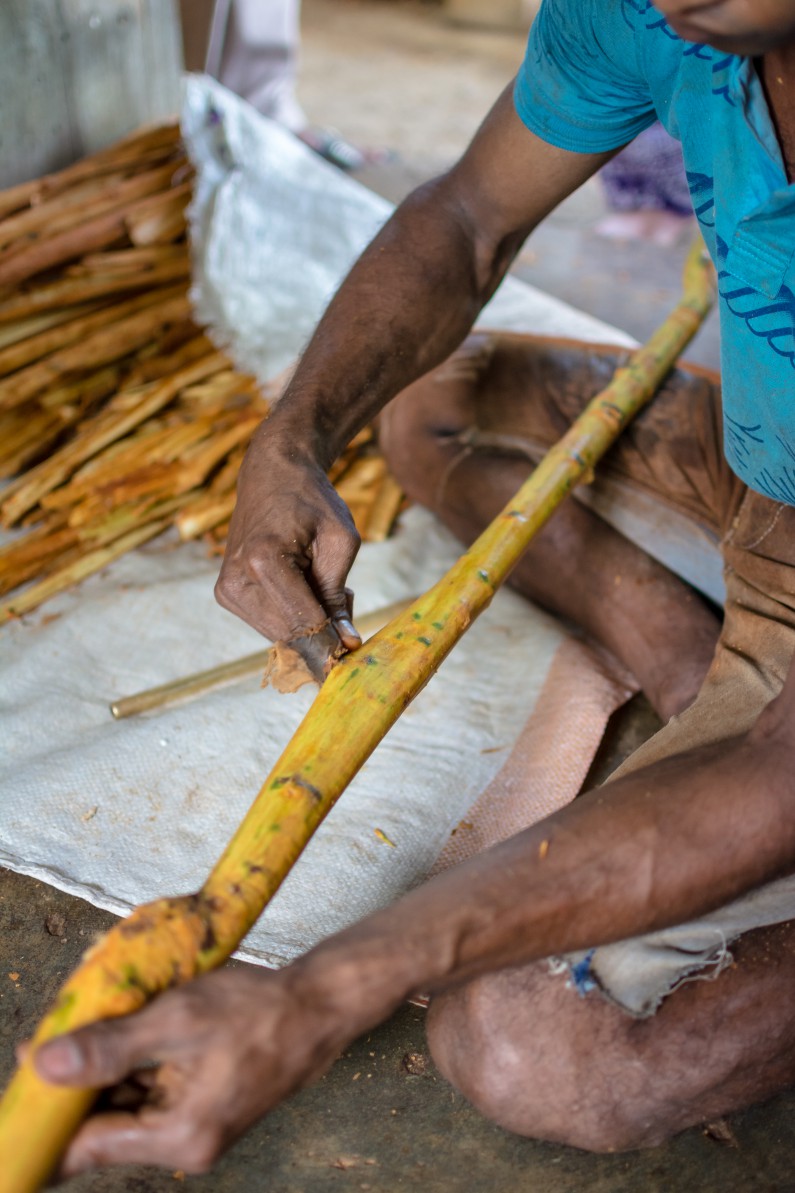 This skinned layer is then rolled into layers and combined to create a larger quill. The edges of the quills are cut to standard length by scissors and then dried for at least 10 days before packaging.
This skinned layer is then rolled into layers and combined to create a larger quill. The edges of the quills are cut to standard length by scissors and then dried for at least 10 days before packaging.
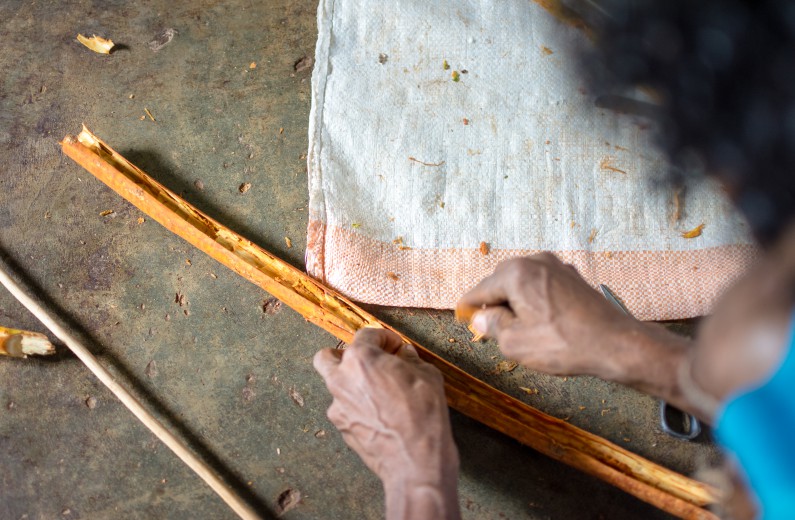
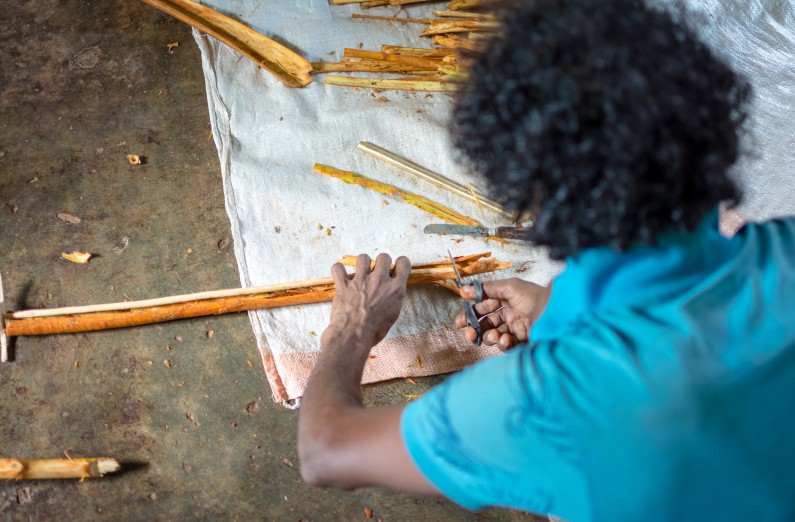
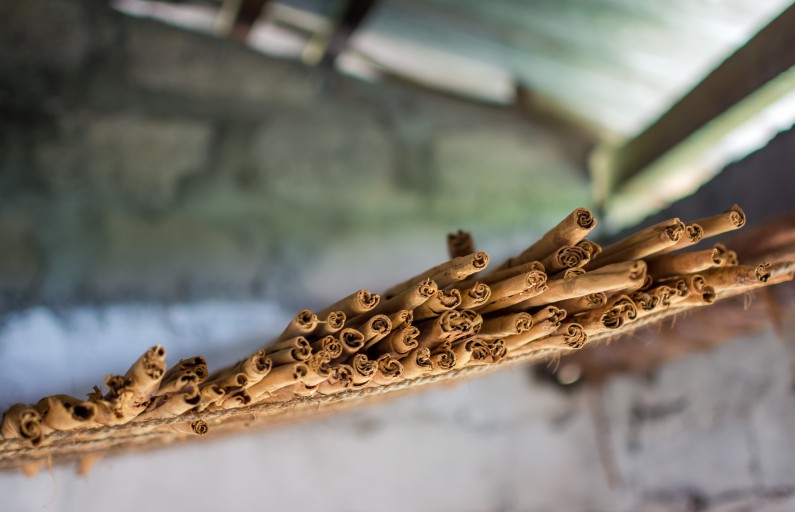 Cinnamon oil is created using the inner wood and dried leaves of the cinnamon tree, which are heated in an oven to extract the oil.
Cinnamon oil is created using the inner wood and dried leaves of the cinnamon tree, which are heated in an oven to extract the oil.
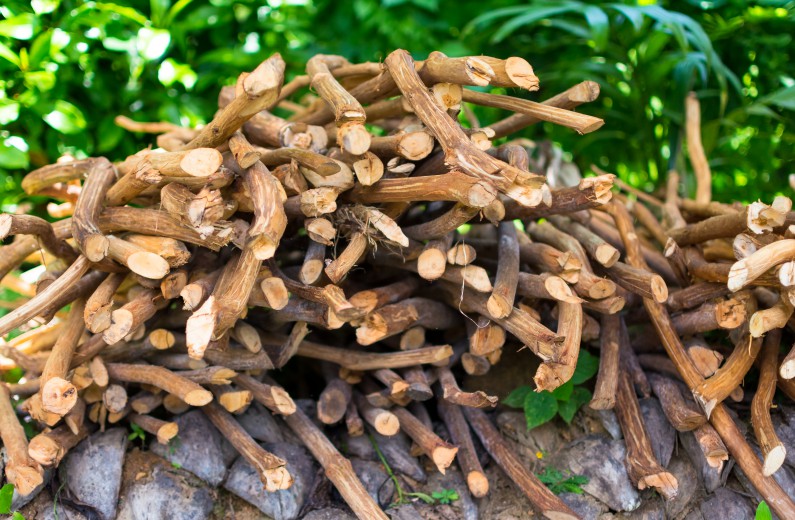
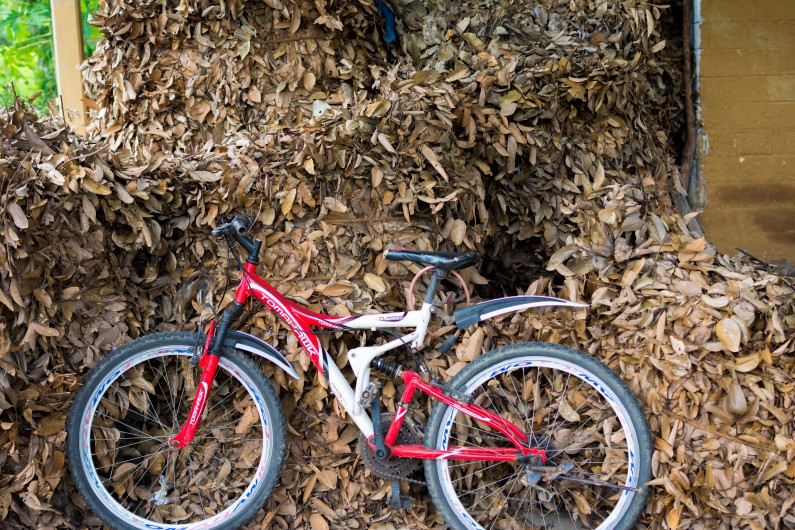
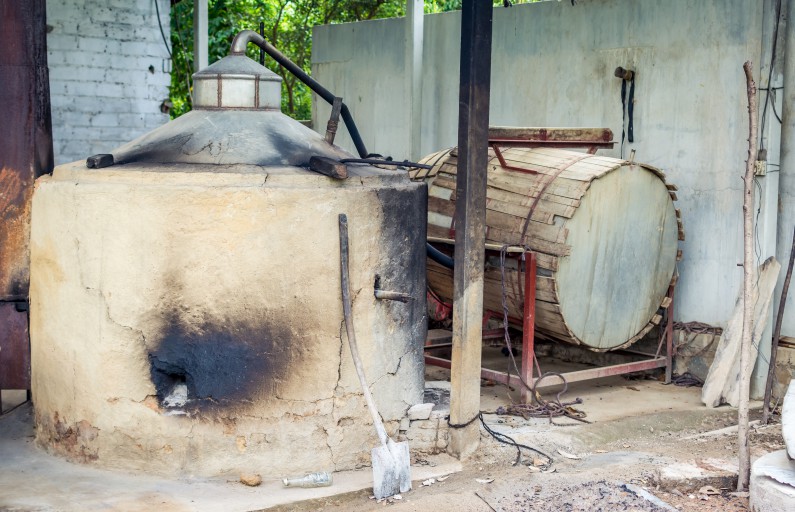
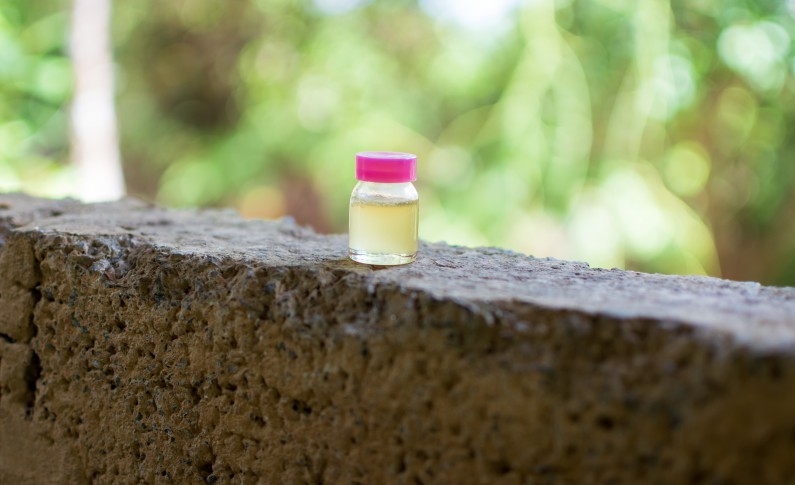 Dried cinnamon quills can be categorized into four main groups based on size. This is a grading system that is unique to Sri Lanka and several other countries follow the same grading system.
Dried cinnamon quills can be categorized into four main groups based on size. This is a grading system that is unique to Sri Lanka and several other countries follow the same grading system.
After the categorization is made, the quills are stocked for packaging and export.
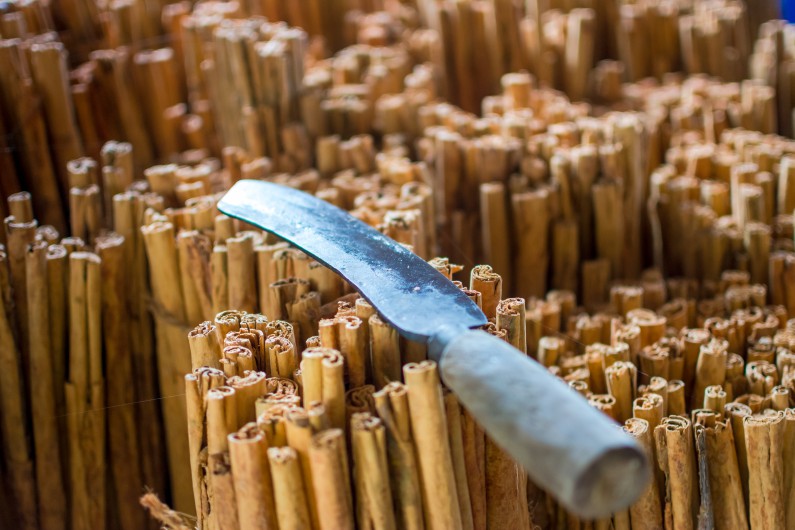
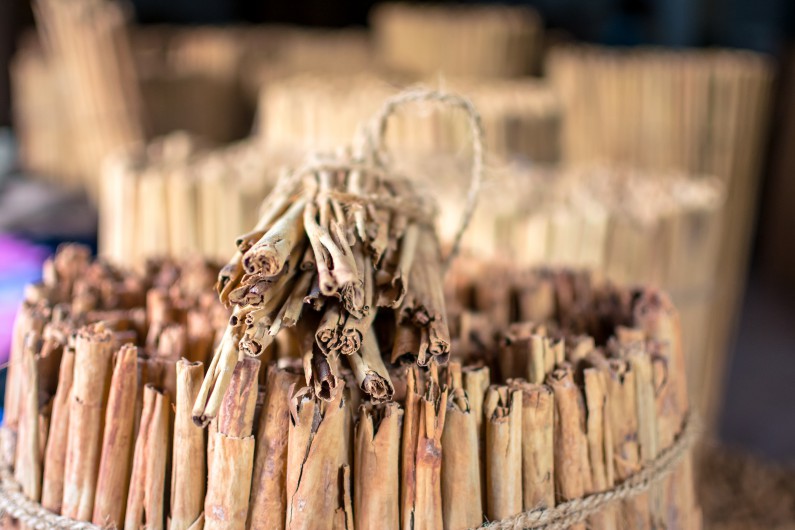
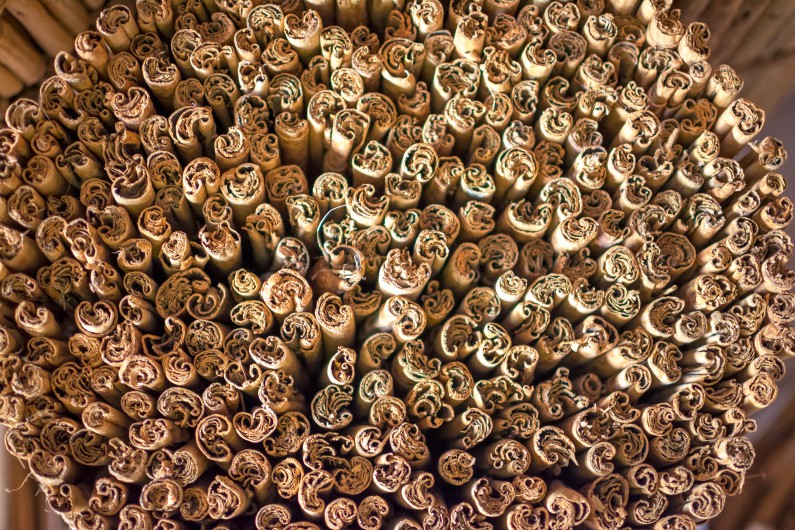
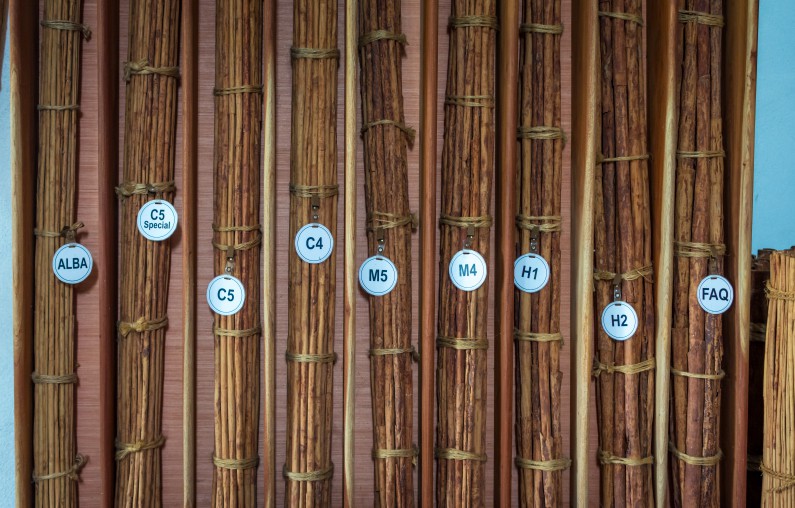
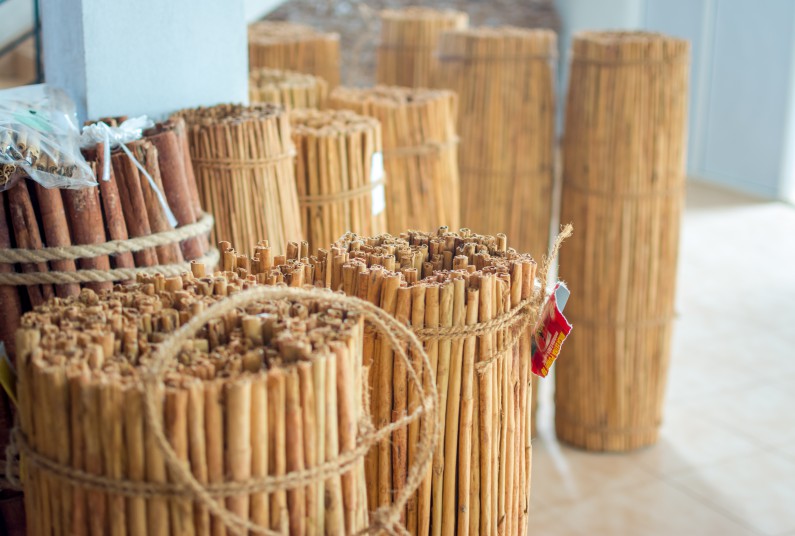 Staff weigh and package the cinnamon quills accordingly.
Staff weigh and package the cinnamon quills accordingly.

